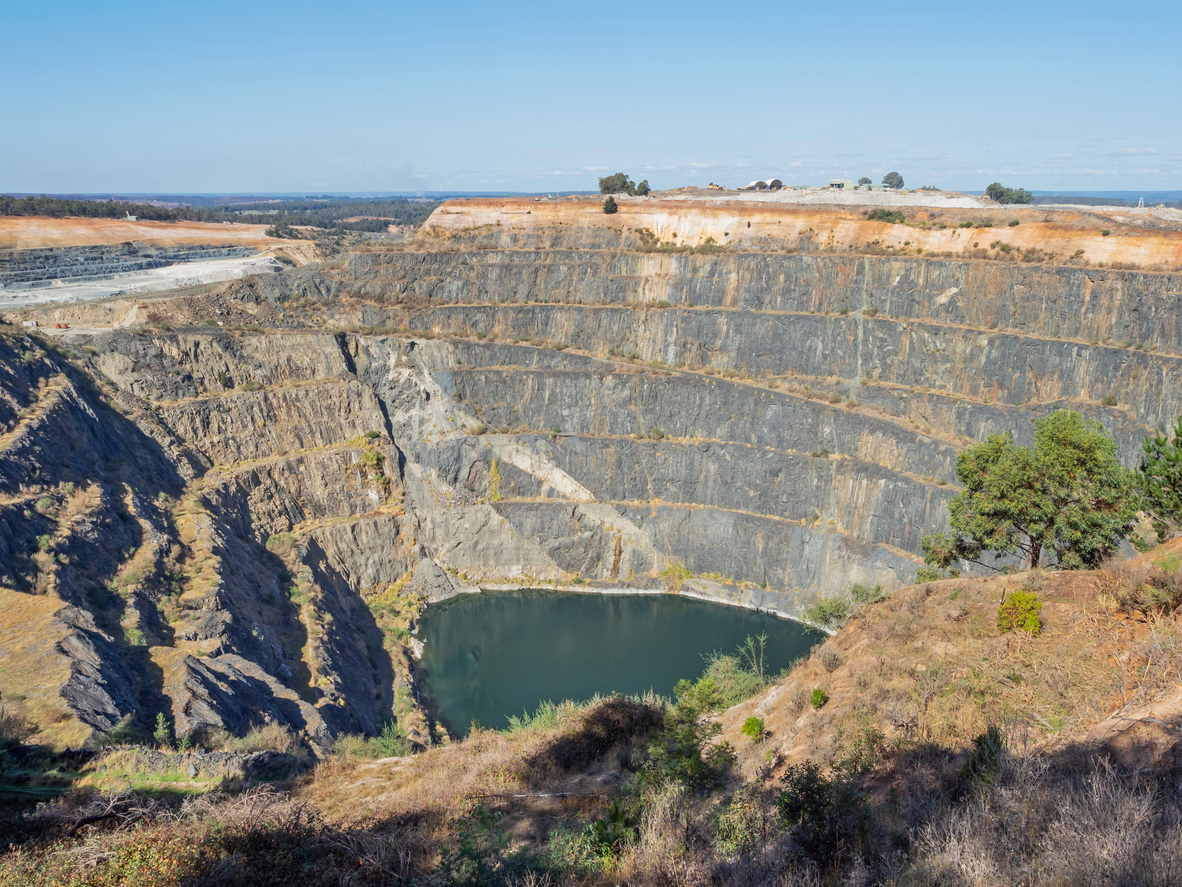Just under two years ago, lithium carbonate prices in China — the world's largest lithium market — hit a dizzying high of $81,360 per metric ton. Elon Musk tweeted that prices had reached "insane levels."
Fast-forward to May 2024, and that price has cratered to around $14,500 per metric ton. It's a sobering reminder of the volatile nature of commodity markets, especially for a relatively new major player like lithium.
But Australia's miners aren't necessarily hitting the panic button. In fact, many are doubling down on their investment strategies. Why? Because they’re playing the long game and they see a future in which lithium — a crucial component of the rechargeable batteries that power electric vehicles, smartphones, and laptops — is a cornerstone of the global energy transition.
Alternative financing could play an important role in supporting this approach. Take EquitiesFirst, which provides flexible, asset-backed liquidity that could allow companies and investors to finance long-term strategies while managing short-term cash flow.
The Growth of Australian Lithium Mining
Australia has quietly become the world's largest producer of lithium, accounting for nearly half of global mined production. It's a dramatic shift from just a decade ago when the country was a bit player in the lithium game.
In 2016, Western Australia had exactly one lithium mine. Today, it boasts seven, with more in the pipeline, and production has increased from roughly a sixth of the world’s lithium supply in 2000 to roughly half in 2024. The crown jewel is the Mount Holland lithium mine, a $1.7 billion behemoth set to produce enough lithium hydroxide to power close to a million new electric vehicles every year for half a century.
“I would love to have 10 more Mount Hollands in Australia as we speak today — one is not enough,” said Ricardo Ramos, chief executive officer of SQM, the Chilean company that opened the mine in March 2024 through Covalent Lithium, a joint venture with Wesfarmers.
But it's not just about mining. Australia is also pushing into processing, aiming to break China's near-monopoly on refining lithium-rich spodumene into battery-grade materials. While Australia shipped 98% of its spodumene to China in 2022-23, increased refining capacity and global demand could see Australia process 15% of its spodumene domestically in 2024-25.
So why are Australian miners so bullish when prices are in the doldrums? It's all about the long-term outlook. McKinsey & Company projects that demand for lithium-ion batteries will grow at an annual rate of 27%, reaching 4,700 gigawatt hours by 2030. The International Energy Agency goes even further, forecasting a fortyfold increase in lithium demand over the next decade and a half.
These aren't just pie-in-the-sky projections. They're based on the hard reality of global decarbonization efforts and the expected growth of the electric vehicle market. It's why mining heavyweights like Hancock Prospecting and Mineral Resources are snapping up lithium assets in Australia even as prices tumble.
Dale Henderson, CEO of Pilbara Minerals, put it bluntly: "It used to be so difficult to get a sale that we had a bell in the office. We used to ring the bell when we'd secure a sale and the whole office would cheer. That was only a few short years ago." Now, despite the price drop, Henderson is anticipating a "fairly material" uptick in prices.
The Financing Conundrum
But optimism alone doesn't pay the bills. And this is where things get tricky for Australia's lithium sector. Traditional financing sources have become increasingly skittish. Australia's "Big Four" banks have slashed their exposure to the resources sector to a decade-low.
Commonwealth Bank, for instance, has seen its total committed exposure to resources decline from almost AU$17 billion (about $11 billion) to AU$7 billion between 2015 and 2022. It's a trend that's leaving many in the lithium sector scrambling for alternative funding sources.
EquitiesFirst is one such alternative. The firm’s approach is to provide liquidity financed against a client's equity portfolio. It's a model that could prove crucial for lithium companies and investors looking to weather the current storm or finance strategic moves without giving up long-term ownership of their assets.
EquitiesFirst's financing model could be particularly appealing in the cyclical world of commodities. It allows companies to leverage their existing equity holdings to secure short-term capital for operations, expansion, or strategic acquisitions.
For entrepreneurs and investors in the Australian minerals space, this type of financing offers a way to tap into the long-term value of an equity portfolio while securing the liquidity needed to capitalize on current market opportunities. It's a potential method of playing both short and long games simultaneously.
Government Support and Global Interest
The Australian government isn't sitting on the sidelines either. Recognizing the strategic importance of the lithium sector, it’s introduced supportive measures like the Critical Minerals Production Tax Incentives. This program will allocate AU$7 billion over the next decade to bolster mineral processing capabilities, creating opportunities for those willing to invest in developing these capabilities while lithium prices are low.
There's also growing international interest in Australian lithium resources. Chinese and Indian companies are actively seeking investments, while SQM has announced plans for an "aggressive" Australian growth strategy.
At the same time, initiatives like the U.S. Inflation Reduction Act, with its incentives for domestic EV manufacturing, could also boost demand for Australian lithium as American companies look to diversify their supply chains away from China.
Challenges and Opportunities
Of course, it's not all smooth sailing. Australia's lithium sector faces significant challenges, including the higher carbon footprint of its hardrock methods compared to brine-based producers like Chile and technical hurdles in lithium hydroxide production that have hampered even industry leaders like Albemarle.
There's also the looming question of whether Australia can successfully move down the battery supply chain, adding value beyond just mining and initial processing. It's a crucial step if the country wants to maximize the economic benefits of its lithium resources.
But these challenges also present opportunities. The need for cleaner production methods could spur innovation in green energy solutions for mining operations. And the push toward downstream integration could generate new jobs and economic growth connected to the mining sector.
For Australia, lithium represents a chance to play a pivotal role in the global energy transition. As Western Australian Premier Roger Cook noted in a recent interview, last year the rise of lithium in the mining region brought in more royalties than the gold fields.
“Let’s not lose perspective,” he said. “Demand is still growing and we will be here to meet it.”
Disclaimer
Past performance does not guarantee future returns and individual returns are not guaranteed or warranted.
This document is intended solely for accredited investors, sophisticated investors, professional investors, or otherwise qualified investors, as may be required by law or otherwise, and it is not intended for, and should not be used by, persons who do not meet the relevant requirements. The content provided herein is for informational purposes only and is general and not targeted to any specific objective or financial need. The views and opinions expressed in this document have been prepared by third parties and do not necessarily reflect the views and opinions of EquitiesFirst. EquitiesFirst has not independently examined or verified the information provided herein, and no representation is made that it is accurate or complete. Opinions and information herein are subject to change without notice. The content provided does not constitute an offer to sell (or solicitation of an offer to purchase) any securities, investments, or any financial products (“Offer”). Any such Offer shall only be made through a relevant offering or other documentation which sets forth its material terms and conditions. Nothing contained in this Document shall constitute a recommendation, solicitation, invitation, inducement, promotion, or offer for the purchase or sale of any investment product by First Holdings, LLC or its subsidiaries (collectively, “EquitiesFirst”), nor shall this Document be construed in any way as investment, legal, or tax advice, or as a recommendation, reference, or endorsement by EquitiesFirst. You should seek independent financial advice before making an investment decision about a financial product.
This Document contains the intellectual property of EquitiesFirst in the United States and other countries, including, without limitation, their respective logos and other registered and unregistered trademarks and service marks. EquitiesFirst reserves all rights in and to their intellectual property contained in this Document. The Document should not be distributed, published, reproduced or otherwise made available in whole or in part by recipients to any other person and, in particular, should not be distributed to persons in any country where such distribution may lead to a breach of any legal or regulatory requirement.
EquitiesFirst makes no representation or warranty concerning this Document and expressly disclaims any implied warranty under law. You acknowledge that EquitiesFirst is not liable under any circumstances for any direct, indirect, special, consequential, incidental, or punitive damages whatsoever, including, without limitation, any lost profits or lost opportunity, even if EquitiesFirst has been advised of the possibility of such damages.











